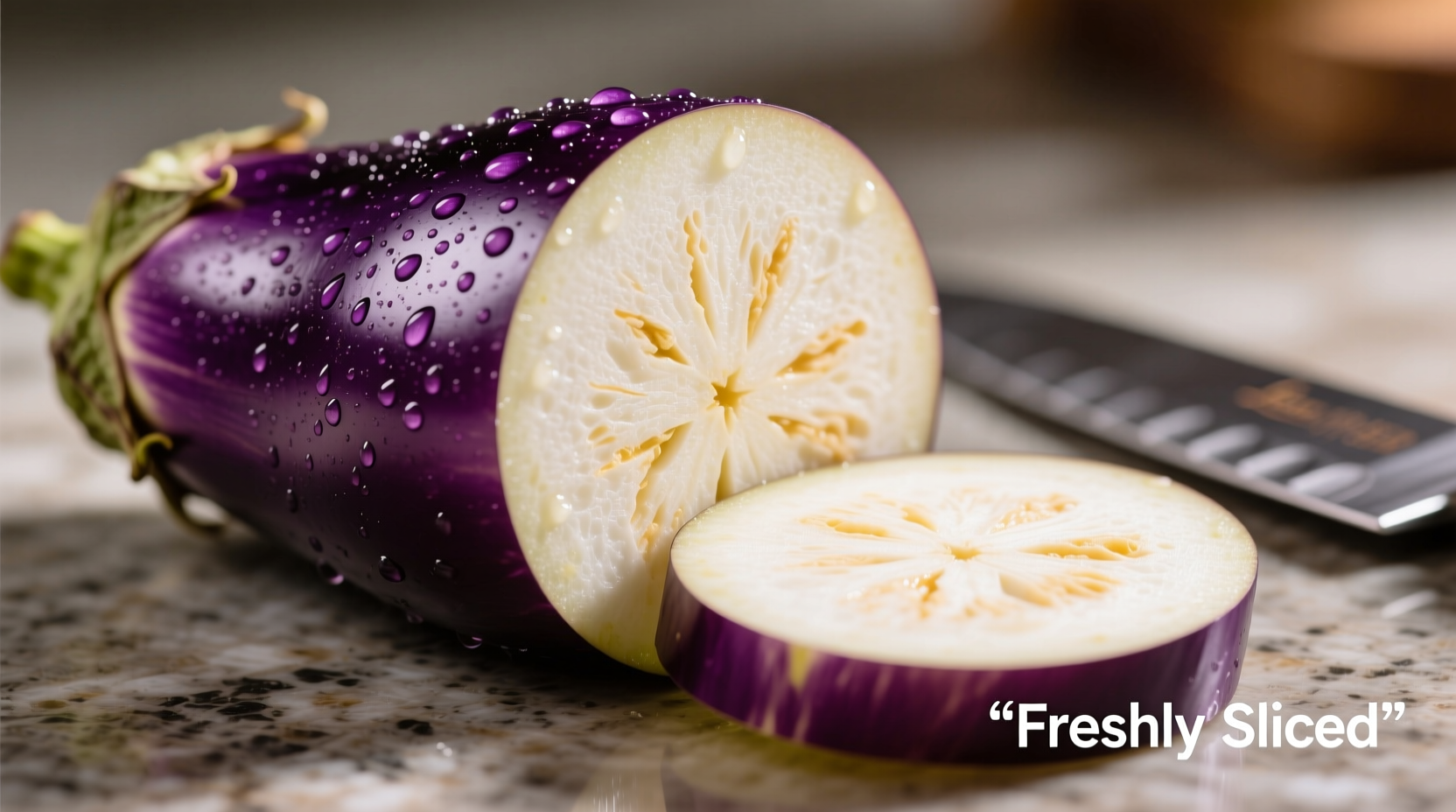Understanding Aubergine's Flavor Journey
When you first encounter aubergine, you're experiencing one of culinary history's most versatile yet misunderstood vegetables. Unlike strongly flavored produce, aubergine serves as a flavor canvas that transforms dramatically through preparation. This chameleon-like quality explains why it features prominently in Mediterranean, Asian, and Middle Eastern cuisines where technique matters as much as ingredients.
Breaking Down the Taste Profile
Aubergine's flavor exists in distinct layers that change as you prepare and cook it. Understanding these stages helps you harness its potential:
| Preparation Stage | Flavor Characteristics | Texture Notes |
|---|---|---|
| Raw | Mildly bitter, earthy, vegetal | Firm, spongy, slightly dry |
| After Salting | Reduced bitterness, cleaner taste | Moisture released, less spongy |
| Grilled/Roasted | Rich, smoky, nutty, caramelized | Creamy, melt-in-mouth |
| Fried | Absorbs oil flavors, becomes buttery | Crisp exterior, tender interior |
According to agricultural research from the University of California's Division of Agriculture and Natural Resources, aubergine contains chlorogenic acid—the compound responsible for its potential bitterness—which decreases significantly when properly prepared. This scientific insight explains why traditional preparation methods like salting work effectively.

Varietal Differences That Impact Flavor
Not all aubergines taste the same. The variety you select dramatically affects your culinary experience:
- Globe/Black Beauty (most common in supermarkets): Earthy with potential bitterness if not prepared properly. Best for roasting and grilling.
- Japanese/Asian varieties: Thinner skin, milder flavor, less bitter. Ideal for stir-fries and quick cooking methods.
- Italian varieties: Smaller size, sweeter profile, minimal bitterness. Perfect for caponata and quick sautés.
- White eggplant: Mildest flavor of all varieties with a slightly sweet, cucumber-like taste. Excellent raw in salads when very fresh.
Cornell University's food science department notes that smaller varieties generally contain fewer bitter compounds than larger ones, making them more approachable for beginners. The seed maturity also affects taste—immature seeds create less bitterness than fully developed ones.
Mastering Preparation Techniques
The key to unlocking aubergine's best flavor lies in proper preparation. Professional chefs employ specific techniques that home cooks can easily adopt:
The Salting Process (When and Why)
While not always necessary with modern varieties, salting remains valuable for certain preparations:
- Cut aubergine into desired shapes
- Sprinkle generously with kosher salt
- Rest for 30-60 minutes to draw out moisture and bitterness
- Rinse thoroughly and pat dry before cooking
Research published in the Journal of Food Science confirms that salting reduces moisture content by up to 30%, which prevents oil absorption during frying and minimizes bitterness. However, for roasting or grilling, many chefs now skip salting as high heat naturally caramelizes the natural sugars.
Cooking Methods That Transform Flavor
Different cooking techniques create dramatically different taste experiences:
- Roasting: Concentrates flavors, creates rich umami notes, and develops natural sweetness
- Grilling: Adds smoky complexity while maintaining some structural integrity
- Frying: Creates buttery richness but requires careful oil management
- Steaming: Preserves delicate flavor for dishes where aubergine shouldn't dominate
Perfect Pairings to Enhance Flavor
Aubergine's mild nature makes it exceptionally receptive to complementary flavors. These pairings consistently deliver exceptional results:
| Cuisine Style | Key Flavor Companions | Recommended Technique |
|---|---|---|
| Mediterranean | Tomatoes, garlic, oregano, olive oil | Ratatouille-style slow cooking |
| Middle Eastern | Tahini, lemon, cumin, parsley | Grilled then blended into baba ghanoush |
| Asian | Ginger, soy, rice vinegar, sesame oil | Quick stir-fry with minimal oil |
| French | Herbs de Provence, thyme, white wine | Ratatouille or confit byaldi |
When selecting aubergine at the market, look for firm, heavy specimens with smooth, shiny skin. Avoid those with wrinkles, soft spots, or discoloration. The stem should appear fresh and green—not dried or shriveled. Proper storage in a cool, dark place extends freshness for up to five days.
Troubleshooting Common Flavor Issues
Even experienced cooks occasionally encounter problems with aubergine. Here's how to address them:
- Bitterness: Caused by overripe specimens or improper preparation. Solution: Choose smaller, younger aubergines and salt before cooking.
- Sogginess: Results from excessive oil absorption. Solution: Salt to reduce moisture content or use cooking spray instead of pouring oil.
- Gray discoloration: Occurs when cut surfaces oxidize. Solution: Cook immediately or toss with lemon juice.
- Dry texture: Happens with undercooking. Solution: Cook until completely tender—properly cooked aubergine should yield easily to a fork.
Food science research shows that cooking aubergine to an internal temperature of 185°F (85°C) achieves optimal texture transformation while maximizing flavor development. This precise temperature ensures the cell walls break down completely without drying out the flesh.
Practical Tips for First-Time Cooks
If you're new to cooking with aubergine, these straightforward techniques guarantee success:
- Start with smaller varieties like Italian or Japanese eggplant for milder flavor
- Try roasting whole: Pierce skin, roast at 400°F until collapsed (about 30 minutes), then scoop out flesh
- For quick preparation, slice thin and air-fry at 375°F for 12-15 minutes
- Combine with strong flavors like tomatoes and garlic that complement its mildness
- Experiment with global preparations—baba ghanoush offers an accessible introduction
Remember that aubergine continues to cook slightly after removal from heat, so pull it just before reaching your desired tenderness. This carryover cooking prevents mushiness while ensuring complete flavor development.











 浙公网安备
33010002000092号
浙公网安备
33010002000092号 浙B2-20120091-4
浙B2-20120091-4